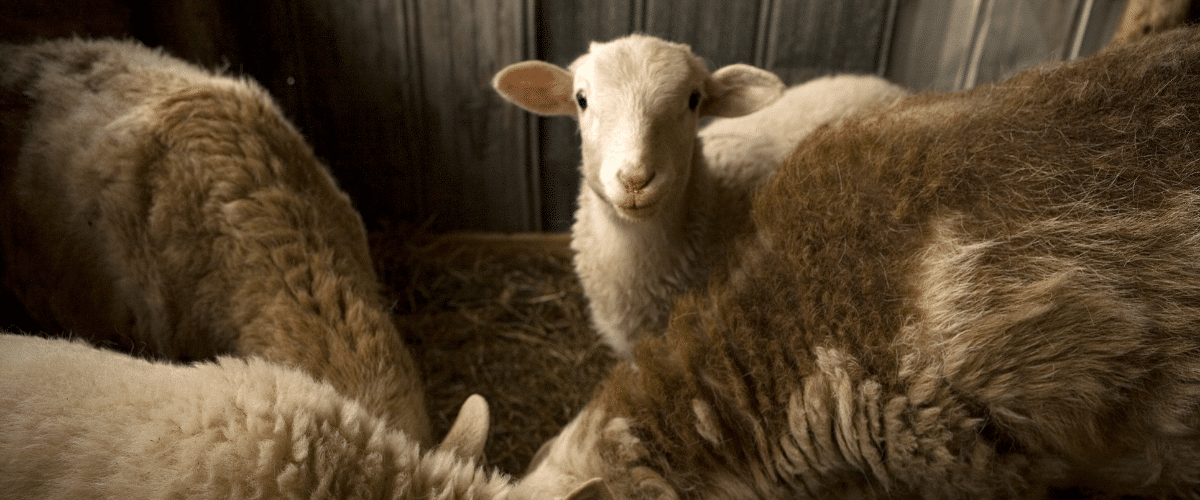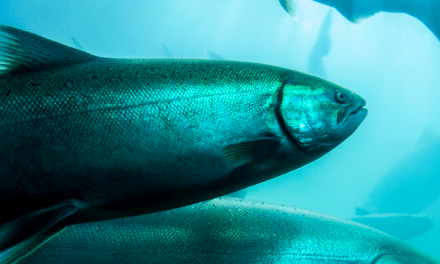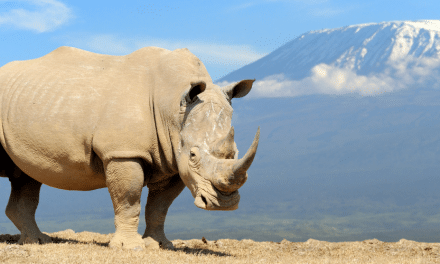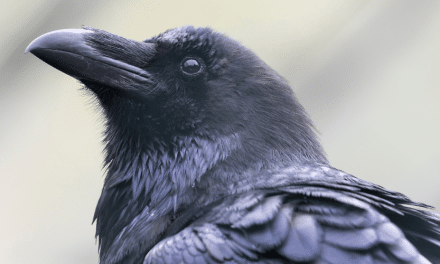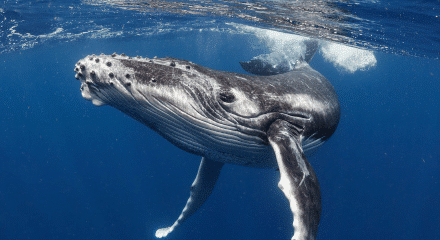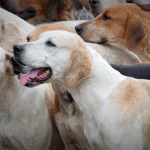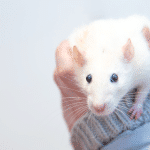By Dr. Joe Wills, University of Leicester
INTRODUCTION
There is now growing awareness that the struggles for animal rights and human rights are interconnected. The industrial exploitation of animals in the farming sector and other settings is not only horrific for the animals themselves, but also has array of terrible consequences for humans. For example, the intensive exploitation of animals for food has been linked to the present COVID-19 global pandemic, environmental devastation, inhumane working conditions, and greater propensity for violence against humans, to give just a few examples. Accordingly, efforts to advance animal rights are increasingly being viewed as complimentary to advancing human rights.
However, the issue of non-stun ‘ritual slaughter’ of animals is typically presented as an instance in which animal and human interests are in tension and possibly even in opposition to one another. This was illustrated in the recent Advocate General (AG) of the EU Court of Justice (ECJ)’s Opinion in Centraal Israëlitisch Consistorie van België and others. In that opinion, AG Hogan held that EU Member States are not permitted to adopt rules that do not exempt ritual slaughter practices from the general requirement to stun animals prior to killing. In arriving at this conclusion, AG Hogan observed that there is ‘no avoiding the fact that the preservation of the religious rites of animal slaughter often sits uneasily with modern conceptions of animal welfare’ (para.87).
I will not assess the legal merits of AG’s opinion in this comment, but instead will critically interrogate the underlying legal and political framework that informs it. This framework is undergirded by the assumption that ensuring animal welfare and respecting religious pluralism exist in a ‘trade off’ relation to one another when it comes to non-stun slaughter, and that one of these objectives can only be advanced at the expense of the other. In opposition to this, I will suggest that neither objective can be met under the existing animal welfare legal regimes in Europe, which permit the infliction of grave harms on animals, even for the satisfaction of trivial human ends. Only by moving towards a legal framework which prohibits, rather than regulates, the instrumental exploitation of other sentient beings can we robustly protect the basic rights of animals in a manner that doesn’t single out the practices of ethnic and religious minorities.
THE FACTS
On June 28, 2017, the Flemish Parliament in Belgium issued a decree requiring that animals be stunned before slaughter regardless of whether religious rules allow it (the Parliament of Wallonia issued a similar measure on May 18, 2017). At the federal level in Belgium, religious slaughter is exempt from the requirement that animals must be stunned before killing.
Five joined actions by Jewish and Muslim organizations sought the total or partial annulment of Flemish decree before the Belgian courts. The Constitutional Court of Belgium referred the matter to the ECJ for a preliminary ruling on the principle question of whether bans on stunning such as those issued by the Flemish parliament are permissible under EU law, especially having regard to the right to religious freedom contained in the Charter of Fundamental Rights of the European Union.
THE AG’S OPINION
The central issue in the AG’s Opinion is how the rules contained in the EU regulation on the protection of animals at the time of killing (‘the Regulation’) ought to be construed. Article 4(1) states in unequivocal terms that ‘animals shall only be killed after stunning’ but article 4(4) creates a derogation from this rule ‘in the case of animals subject to particular methods of slaughter prescribed by religious rites’.
The key point of contention in the case concerned how much leeway the Regulation, read in conjunction with the Charter of Fundamental Rights, leaves for States to regulate religious slaughter to protect animal welfare. In particular, are Member States permitted to ban, in whole or part, non-stun slaughter, even if doing so would make certain methods of religious slaughter effectively illegal?
AG Hogan answered this question in the negative. Although states are afforded ‘a certain level of subsidiarity’ (Recital 18) in regulating religious slaughter and may adopt stricter national animal protections in relation to it than those set out in the Regulation(article 26(2)(c)), this discretion does not extend to prohibiting ritual slaughter without prior or post-cut stunning. Doing to do so would undermine the entire rationale of the Derogation in s4(4), which is to ensure freedom of religion (paras 75 & 76).
The AG’s opinion, if followed by the ECJ, will have wide-ranging implications. It would not only render the Flemish and Wallonia decrees in breach of EU law, but will have a similar effect for a host of other EU Member States that have adopted national laws requiring prior cut or post cut stunning, including Austria, Denmark, Estonia, Finland, Greece, Latvia and Slovenia as well as prohibiting any future adoption of such laws by all Member States.
Unsurprisingly, the opinion has been welcomed by religious groups but criticised by animal welfare campaigners. However, in what follows I will suggest that, when looking at the bigger picture, neither the objectives of respect for religious pluralism nor animal welfare can be adequately protected under the present animal protection laws of the EU and its Member States, regardless of whether non-stun slaughter bans are permitted or not.
THE UGLY HISTORY OF ANTI-RITUAL SLAUGHTER CAMPAIGNS
In the 2018 case of Liga van Moskeeën en islamitische Organisaties Provincie Antwerpen VZW v Vlaams Gewest, Advocate General Wahl correctly observed that in debates about religious slaughter ‘the spectre of stigmatisation very swiftly appears. It is historically prevalent and care must be taken not to encourage it’ (para 106). Indeed, opposition to non-stun slaughter has a long, sordid history that is mired in anti-Semitism and, more recently, Islamophobia. Europe’s first ban on shehita (Jewish) slaughter was introduced in Switzerland at the end of the 19th century. It is widely believed that the motive for the ban was at least in part to discourage the Jewish immigration. Kosher slaughter was also banned by the Nazis in 1933, accompanied by a viciously anti-Semitic campaign.
Today, Islamophobia is a major driving force in anti-non-stun slaughter campaigns. In England, the fascist British National Party, the English Defence League and their progeny have organised a series of protests against halal slaughter. In France, the leader of the far right Le Front Nationale, Marine Le Pen, has also advocated a ban on non-stun slaughter. In the Flemish region of Belgium, where the legally contested ban on non-stun slaughter was introduced, a recent survey shows that less than 20% of the Flemish population see Muslim and Western values as compatible.
Against this backdrop and history, it is understandable that non-stun slaughter laws are viewed with suspicion and fear. Even where they are motivated by genuine concern for animal welfare rather than open bigotry, they can nonetheless feed into wider xenophobic narratives and create the perception that historically-discriminated-against minorities are being treated as second class citizens.
THE LIMITS OF TOLERANCE
Unfortunately, the EU regime’s creation of a derogation for religious non-stun slaughter does not address the stigmatization concern just discussed, rather it recasts the stigmatization under the guise of ‘tolerance’. As AG Hogan puts it in his opinion, the function of the Article 4(4) derogation is to uphold the ‘EU’s commitment to a tolerant, plural society where divergent and, at times, conflicting views and beliefs subsist and must be reconciled’ (para 57). Though tolerance is essential in a pluralist society, it is not an unqualified good. Tolerance is about managing the undesirable. As Wendy Brown puts it in Regulating Aversion: Tolerance in the Age of Identity and Empire:
“Despite its pacific demeanor, tolerance is an internally unharmonious term… tolerance is necessitated by something one would prefer did not exist. It involves managing the presence of the undesirable, the tasteless, the faulty — even the revolting, repugnant, or vile. In this activity of management, tolerance does not offer resolution or transcendence, but only a strategy for coping.” (page 25).”
It is clear from the Regulation, the jurisprudence of the ECJ and AG Hogan’s legal opinion that pre-stun slaughter represents the ideal or gold standard when it comes to killing animals, in contrast to non-stun slaughter which ought, at best, be legally tolerated, despite being sub-standard from an animal welfare perspective. This was made clear in the 2019 case of Œuvre d’assistance aux bêtes d’abattoirs v Ministre de l’Agriculture et de l’Alimentation when the ECJ ruled that the organic logo of the EU could not be used on products derived from animals slaughtered in accordance with religious rites without prior stunning. This is because one of the criteria for the Organic logo for animal products is the observation of the highest standards of animal welfare, and non-stun slaughter falls short of that requirement (paras 50–52). As the court put it, the derogation on the need for prior-stunning in cases of religious slaughter exists ‘solely in order to ensure observation of freedom of religion (para 48, my emphasis)’.
This view of non-stun slaughter as an undesired presence to be tolerated is further reflected in AG Hogan’s opinion. For whilst the AG is of the opinion that non-stun slaughter must be permitted to protect freedom of religion, he also expressed the worry that currently this means non-stun meat ‘is simply allowed to enter the general food chain to be consumed by customers who are unaware’ (para 63). Such a state of affairs, on his view, does ‘not comply with either the spirit or the letter’ of EU animal welfare obligations (ibid). In other words, the AG is worried about these sub-standard practices ‘contaminating’ the EU’s animal welfare regime.
It is not difficult to see how EU law’s discourse of tolerance could help to fuel the very hostility and resentment to non-stun slaughter that lead to campaigns to ban it. Non-stun slaughter is framed as an undesirable practice that has to be tolerated for the sake of the higher value of pluralism and freedom of religion. Permitting non-stun slaughter under the existing framework does not therefore remove the stigma, it merely recodes it.
UNDERMINING ANIMAL PROTECTION
There are obviously also animal protection concerns with recognizing the slaughter of animals without stunning as a human right, particularly in light of the strong consensus amongst animal welfare scientists and veterinarians that slaughter without prior stunning causes significant suffering. In 2004, a report from the European Food Safety Authority concluded that ‘due to the serious animal welfare concerns associated with slaughter without stunning, pre-cut stunning should always be performed’. The British Veterinary Association, the Federation of Veterinarians of Europe, the Farm Animal Welfare Committee, the Human Slaughter Association and the RSPCA are all against slaughter without pre-stunning because they believe that the scientific evidence shows that it causes more suffering than pre-stun methods. This view was also recently affirmed in a study by Roberta Barrasso et al.
Of course, some defenders of non-stun slaughter maintain that it causes no more suffering, and possibly even less, than standard pre-stun methods, and indeed, as we will touch on below, there is a lot more suffering in ‘standard’ methods of slaughter than commonly assumed.
However, even granting the claim that non-stun slaughter methods are no worse than pre-stun methods, there is a deeper normative concern with recognising the killing of animals — especially via controversial methods — as a human right. In AG Hogan’s opinion, he acknowledges that animal welfare has ‘real weight and meaning’ in EU law but that ‘it must yield in certain circumstances to the even more fundamental objective of securing religious freedoms and beliefs’ (para 62). A key problem with existing animal welfare laws is precisely that they are consistently narrowed in scope by counter-veiling human interests to the point that they barely serve any protective function at all. As Chief Justice Fraser of the Alberta Court of Appeal bluntly summarized this point: ‘what constitutes improper neglect or harm to animals… continues to be understood primarily in terms of the interests of humans. And our privileged position invariably governs’ (para. 61).
When the infliction of harm on animals is elevated to the status of a human right, the deck is stacked even more in favour of humans, impeding the possibility of legal reform to advance the protection of animal interests. Whatever one’s position is on non-stun slaughter relative to other types of slaughter, the explicit encoding of a violent practice against animals as a human right represents a dangerous precedent from an animal protection perspective.
WELFARIST FALSE CONSCIOUSNESS
A key critique of existing animal welfare law and ideology is that it fosters a form of ‘false consciousness’ on the public, selling them a seductive story that animals, including farm animals, are humanely treated and that cruel practices are prohibited. Such a picture obscures the typically horrendous reality of our present relations with the other animals and forestalls critical re-appraisal of that relationship by the public.
Non-stun slaughter bans can serve a similar function. Non-stun slaughter is prohibited because the suffering it causes is deemed to be cruel. A possible implicit corollary of this proposition is that the other forms of slaughter that remain legal are ‘humane’. Even if we bracket the question of whether killing young animals for food we don’t need can ever be classified as humane, there are significant problems with this account. First, it is not a legal requirement that all the animals we kill for food are legally required to be pre-stunned. In fact, the most numerous animal we kill for food — fishes — do not have to be pre-stunned (the Regulation, article 1(1)). Both farmed and wild-caught fishes are subject to particularly horrible forms of killing, including being bled to death, suffocated and asphyxiated. Moreover decapod crustaceans like lobsters and crabs and cephalopods such as octopuses are not protected by welfare laws at all, meaning that they are commonly killed by being boiled alive.
Second, stunning routinely fails to render animals unconscious. Take electric stun baths used for birds for example. This involves subjecting live birds to stressful and painful shackling and electric shocks and induction of seizures while still conscious. They do not produce a consistent, immediate stun effect and some birds miss the stunner all together. There is evidence that chickens not only have their throats cut whilst fully conscious but also still alive when they reach the scald vats and are boiled to death. Data released by UK the food standards agency in 2016 revealed incidents of chickens being boiled alive and animals suffocating or freezing to death in trucks. Given the sheer scale of animal slaughter in Europe, it’s very hard to imagine any system that wouldn’t involve fairly widespread breaches and failures of stunning techniques.
Finally, even when pre-stunning methods effectively render an animal unconscious prior to slaughter, the means by which the animals are stunned can themselves be a cause of suffering, fear and distress. Take one of the main ways pigs are stunned for example, through the use gas chambers. This involves lowering a group of pigs into carbon monoxide or carbon dioxide gas chambers where they are rendered unconscious through the use gas. It can take a minute or more for the pigs to lose consciousness and they desperately try to escape and gasp for air. It is highly questionable whether this method for killing pigs is any more humane than the non-stun method for killing chickens and sheep. Of course, alternatives to gassing exist, including the use of a stun gun. However, stun guns also raise their own set of welfare concerns. Pigs are social animals and the use of stun guns require that they be separated from one another, and this itself also causes them a huge amount of stress.
In short, in the context of industrialised animal agriculture at the least, humane slaughter is simply a fantasy. Killing large numbers of sentient beings will always cause lots of pain, fear and distress and we can have discussions about which methods cause the least amount, but it is not as clear that predominant methods of pre-stun slaughter are always better than the non-stun method.
BEYOND SLAUGHTERHOUSES
Against the common assumption that religious pluralism and animal welfare are in conflict in the context of the non-stun slaughter debate, this comment has suggested a different framing in which both values are undermined by the present legal animal welfare regime in Europe, whether non-stun slaughter is permitted or not. Let me conclude by explaining how.
Europe’s legal animal welfare regime instantiates the ‘welfarist’ principle that humans are entitled to instrumentally harm and kill animals for their benefit, so long as they avoid doing so in a ‘cruel’ or ‘unnecessary’ way. It is this core principle that hurts both minority groups and animals. It hurts minority groups because, as Sue Donaldson and Will Kymlicka note, it ‘opens the door to bias, since perceptions of what is cruel or unnecessary are culturally variable’. Accordingly, dominant societal uses of animals are more likely to be regarded as ‘necessary’ and ‘humane’ whilst minority practices are more likely to be regarded as ‘unnecessary’ and ‘cruel’. This same principle also harms animals, because it inoculates dominant practices, such as industrial farming, from significant criticism, regardless of how harmful they are to animals.
In short, whilst our legal systems continue to operate on animal welfarist grounds, minority groups and animals will both continue to lose out. Only by moving towards the abolition of animal exploitation and the legally codified protection of fundamental animal rights can we truly protect animal rights in a way that doesn’t single out minority practices for legal prohibitions and social disapprobation. And the only possible world without inhumane slaughter is a world without slaughterhouses.
[Ed. note: This has been re-published from Medium.com without further editing.]

